Note: This notes were made using the following books: “CISPP Study Guide” and “CISSP for dummies”.
Security Architecture and Design describes fundamental logical hardware, operating system, and software security components, and how to use those components to design, architect, and evaluate secure computer systems.
Security Architecture and Design is a three-part domain. The first part covers the hardware and software required to have a secure computer system. The second part covers the logical models required to keep the system secure, and the third part covers evaluation models that quantify how secure the system really is.
Secure system design concepts
Layering separates hardware and software functionality into modular tiers. A generic list of security architecture layers is as follows:
1. Hardware
2. Kernel and device drivers
3. Operating System
4. Applications
Abstraction hides unnecessary details from the user. Complexity is the enemy of security: the more complex a process is, the less secure it is.
A security domainis the list of objects a subject is allowed to access. Confidential, Secret, and Top Secret are three security domains used by the U.S. Department of Defense (DoD), for example. With respect to kernels, two domains are user mode and kernel mode.
The ring model is a form of CPU hardware layering that separates and protects domains (such as kernel mode and user mode) from each other. Many CPUs, such as the Intel ×86 family, have four rings, ranging from ring 0 (kernel) to ring 3 (user).
The rings are (theoretically) used as follows:
• Ring 0: Kernel
• Ring 1: Other OS components that do not fit into Ring 0
• Ring 2: Device drivers
• Ring 3: User applications
Processes communicate between the rings via system calls, which allow processes to communicate with the kernel and provide a window between the rings.The ring model also provides abstraction: the nitty-gritty details of saving the file are hidden from the user, who simply presses the “save file” button. A new mode called hypervisor mode (and informally called “ring 1”) allows virtual guests to operate in ring 0, controlled by the hypervisor one ring “below”.
An open system uses open hardware and standards, using standard components from a variety of vendors. An IBM-compatible PC is an open system.
A closed system uses proprietary hardware or software.
Secure hardware architecture
Secure Hardware Architecture focuses on the physical computer hardware required to have a secure system.
The system unit is the computer’s case: it contains all of the internal electronic computer components, including motherboard, internal disk drives, power supply, etc. The motherboard contains hardware including the CPU, memory slots, firmware, and peripheral slots such as PCI (Peripheral Component Interconnect) slots.
A computer bus, is the primary communication channel on a computer system. Communication between the CPU, memory, and input/output devices such as keyboard, mouse, display, etc., occur via the bus. Some computer designs use two buses: a northbridge and southbridge. The northbridge, also called the Memory Controller Hub (MCH), connects the CPU to RAM and video memory. The southbridge, also called the I/O Controller Hub (ICH), connects input/output (I/O) devices, such as disk, keyboard, mouse, CD drive, USB ports, etc. The northbridge is directly connected to the CPU, and is faster than the southbridge.
The “fetch and execute” (also called “Fetch, Decode, Execute,” or FDX) process actually takes four steps: 1. Fetch Instruction 1 2. Decode Instruction 1 3. Execute Instruction 1 4. Write (save) result 1 These four steps take one clock cycle to complete.
Pipelining combines multiple steps into one combined process, allowing simultaneous fetch, decode, execute, and write steps for different instructions.
An interrupt indicates that an asynchronous event has occurred. CPU interrupts are a form of hardware interrupt that cause the CPU to stop processing its current task, save the state, and begin processing a new request. When the new task is complete, the CPU will complete the prior task.
A processis an executable program and its associated data loaded and running in memory. A parent process may spawn additional child processes called threads. A thread is a light weight process (LWP). Threads are able to share memory, resulting in lower overhead compared to heavy weight processes.
Applications run as processes in memory, comprised of executable code and data. Multitasking allows multiple tasks (heavy weight processes) to run simultaneously on one CPU.
Multiprogramming is multiple programs running simultaneously on one CPU; multitasking is multiple tasks (processes) running simultaneously on one CPU, and multithreading is multiple threads (light weight processes) running simultaneously on one CPU.
Multiprocessing has a fundamental difference from multitasking: it runs multiple processes on multiple CPUs.
A watchdog timer is designed to recover a system by rebooting after critical processes hang or crash. The watchdog timer reboots the system when it reaches zero.
CISC (Complex Instruction Set Computer) and RISC(Reduced Instruction Set Computer) are two forms of CPU design. CISC uses a large set of complex machine language instructions, while RISC uses a reduced set of simpler instructions.
Real (or primary) memory, such as RAM, is directly accessible by the CPU and is used to hold instructions and data for currently executing processes. Secondary memory, such as disk-based memory, is not directly accessible.
Cache memoryis the fastest memory on the system, required to keep up with the CPU as it fetches and executes instructions. The fastest portion of the CPU cache is the register file. The next fastest form of cache memory is Level 1 cache, located on the CPU itself. Finally, Level 2 cache is connected to (but outside) the CPU.
RAM is volatile memory used to hold instructions and data of currently running programs.
Static Random Access Memory (SRAM) is expensive and fast memory.
Dynamic Random Access Memory (DRAM) stores bits in small capacitors (like small batteries), and is slower and cheaper than SRAM.
ROM (Read Only Memory) is nonvolatile: data stored in ROM maintains integrity after loss of power.
Addressing modes are CPU-dependent; commonly supported modes include direct, indirect, register direct, and register indirect. Direct mode says “Add X to the value stored in memory location #YYYY.” That location stores the number 7, so the CPU adds X + 7. Indirectstarts the same way: “Add X to the value stored in memory location #YYYY.” The difference is #YYYY stores another memory location (#ZZZZ). The CPU follows to pointer to #ZZZZ, which holds the value 7, and adds X + 7. Register direct addressing is the same as direct addressing, except it references a CPU cache register. Register indirect is also the same as indirect, except the pointer is stored in a register.
Memory protectionprevents one process from affecting the confidentiality, integrity, or availability of another.
Process isolation is a logical control that attempts to prevent one process from interfering with another. This is a common feature among multiuser operating systems such as Linux, UNIX, or recent Microsoft Windows operating systems.
Hardware segmentation takes process isolation one step further by mapping processes to specific memory locations.
Virtual memory provides virtual address mapping between applications and hardware memory.
Swapping uses virtual memory to copy contents in primary memory (RAM) to or from secondary memory (not directly addressable by the CPU, on disk). Swap space is often a dedicated disk partition that is used to extend the amount of available memory. If the kernel attempts to access a page (a fixed-length block of memory) stored in swap space, a page fault occurs (an error that means the page is not located in RAM), and the page is “swapped” from disk to RAM. The terms “swapping” and “paging” are often used interchangeably, but there is a slight difference: paging copies a block of memory to or from disk, while swapping copies an entire process to or from disk.
Firmware stores small programs that do not change frequently, such as a computer’s BIOS (discussed below), or a router’s operating system and saved configuration. Various types of ROM chips may store firmware, including PROM, EPROM, and EEPROM.
Flash memory (such as USB thumb drives) is a specific type of EEPROM, used for small portable disk drives. The difference is any byte of an EEPROM may be written, while flash drives are written by (larger) sectors. This makes flash memory faster than EEPROMs, but still slower than magnetic disks.
The IBM PC-compatible BIOS(Basic Input Output System) contains code in firmware that is executed when a PC is powered on. It first runs the Power-On Self-Test (POST), which performs basic tests, including verifying the integrity of the BIOS itself, testing the memory, identifying system devices, among other tasks. Once the POST process is complete and successful, it locates the boot sector (for systems which boot off disks), which contains the machine code for the operating system kernel. The kernel then loads and executes, and the operating system boots up.
WORM(Write Once Read Many) Storage can be written to once, and read many times. WORM storage helps assure the integrity of the data it contains: there is some assurance that it has not been (and cannot be) altered, short of destroying the media itself. The most common type of WORM media is CD-R (Compact Disc Recordable) and DVD-R (Digital Versatile Disk Recordable). Note that CD-RW and DVD-RW (Read/Write) are not WORM media.
Techniques used to provide process isolation include virtual memory (discussed in the next section), object encapsulation, and time multiplexing.
Secure operating system and software architecture
Secure Operating System and Software Architecture builds upon the secure hardware described in the previous section, providing a secure interface between hardware and the applications (and users) which access the hardware.
Kernels have two basic designs: monolithic and microkernel. A monolithic kernelis compiled into one static executable and the entire kernel runs in supervisor mode. All functionality required by a monolithic kernel must be precompiled in. Microkernelsare modular kernels. A microkernel is usually smaller and has less native functionality than a typical monolithic kernel (hence the term “micro”), but can add functionality via loadable kernel modules. Microkernels may also run kernel modules in user mode (usually ring 3), instead of supervisor mode. A core function of the kernel is running the reference monitor, which mediates all access between subjects and objects. It enforces the system’s security policy, such as preventing a normal user from writing to a restricted file, such as the system password file.
Microsoft NTFS (New Technology File System) has the following basic file permissions:
• Read
• Write
• Read and execute
• Modify
• Full control (read, write, execute, modify, and delete)
Setuid is a Linux and UNIX file permission that makes an executable run with the permissions of the file’s owner, and not as the running user. Setgid (set group ID) programs run with the permissions of the file’s group. Setuid programs must be carefully scrutinized for security holes: attackers may attempt to trick the passwd command to alter other files.
Virtualization adds a software layer between an operating system and the underlying computer hardware. This allows multiple “guest” operating systems to run simultaneously on one physical “host” computer. There are two basic virtualization types: transparent virtualization (sometimes called full virtualization) and paravirtualization. Transparent virtualization runs stock operating systems, such as Windows 7 or Ubuntu Linux 9.10, as virtual guests. No changes to the guest OS are required. Paravirtualization runs specially modified operating systems, with modified kernel system calls.
Thin clientsare simpler than normal computer systems, with hard drives, full operating systems, locally installed applications, etc. They rely on central servers, which serve applications and store the associated data.Thin client applications normally run on a system with a full operating system, but use a Web browser as a universal client, providing access to robust applications which are downloaded from the thin client server and run in the client’s browser.
A diskless workstation (also called diskless node) contains CPU, memory, and firmware, but no hard drive. Diskless devices include PCs, routers, embedded devices, and others.
System vulnerabilities, threads and countermeasures
System Threats, Vulnerabilities, and Countermeasures describe security architecture and design vulnerabilities, and the corresponding exploits that may compromise system security.
Emanations are energy that escape an electronic system, and which may be remotely monitored under certain circumstances.
A covert channelis any communication that violates security policy. Two specific types of covert channels are storage channels and timing channels. The opposite of as covert channel is an overt channel: authorized communication that complies with security policy. A storage channel example uses shared storage, such as a temporary directory, to allow two subjects to signal each other. A covert timing channel relies on the system clock to infer sensitive information.
Buffer overflows can occur when a programmer fails to perform bounds checking.
Time of Check/Time of Use (TOCTOU) attacks are also called race conditions: an attacker attempts to alter a condition after it has been checked by the operating system, but before it is used. The term race condition comes from the idea of two events or signals that are racing to influence an activity.
A backdoor is a shortcut in a system that allows a user to bypass security checks (such as username/password authentication) to log in.
Malicious Code or Malware is the generic term for any type of software that attacks an application or system.
- Zero-day exploits are malicious code (a threat) for which there is no vendor-supplied patch (meaning there is an unpatched vulnerability). Zero-day exploits are malicious code (a threat) for which there is no vendor-supplied patch (meaning there is an unpatched vulnerability).
- A rootkitis malware which replaces portions of the kernel and/or operating system. A user-mode rootkit operates in ring 3 on most systems, replacing operating system components in “userland.” Commonly rootkitted binaries include the ls or ps commands on Linux/UNIX systems, or dir or tasklist on Microsoft Windows systems. A kernel-mode rootkit replaces the kernel, or loads malicious loadable kernel modules. Kernel-mode rootkits operate in ring 0 on most operating systems.
- A logic bomb is a malicious program that is triggered when a logical condition is met.
- Packers provide runtime compression of executables. The original exe is compressed, and a small executable decompresser is prepended to the exe. Upon execution, the decompresser unpacks the compressed executable machine code and runs it.
Server-side attacks
Server-side attacks (also called service-side attacks) are launched directly from an attacker (the client) to a listening service. Server-side attacks exploit vulnerabilities in installed services.
Client-side attacks
Client-side attacks occur when a user downloads malicious content. The flow of data is reversed compared to server-side attacks: client-side attacks initiate from the victim who downloads content from the attacker.
Security Assertion Markup Language (SAML) is an XML-based framework for exchanging security information, including authentication data.
Polyinstantiation allows two different objects to have the same name. The name is based on the Latin roots for multiple (poly) and instances (instantiation).
Database polyinstantiation means two rows may have the same primary key, but different data (!!!????).
Inference and aggregation occur when a user is able to use lower level access to learn restricted information.
Inference requires deduction: clues are available, and a user makes a logical deduction.
Aggregation is similar to inference, but there is a key difference: no deduction is required.
Security Countermeasures
The primary countermeasure to mitigate the attacks described in the previous section is defense in depth: multiple overlapping controls spanning across multiple domains, which enhance and support each other.
System hardening , systems configured according to the following concepts:
- remove all unnecessary components.
- remove all unnecessary accounts.
- close all unnecessary network listening ports.
- change all default passwords to complex, difficult to guess passwords
- all necessary programs should be run at the lowest possible privilege.
- security patches should be install as soon as they are available.
Heterogenous environment The advantage of heterogenous environment is its variety of systems; for one thing, the various types of systems probably won’t possess common vulnerabilities, which makes them harder to attack.
System resilience The resilience of a system is a measure of its ability to keep running, even under less-than-ideal conditions.
Security models
Security models help us to understand sometimes-complex security mechanisms in information systems. Security models illustrate simple concepts that we can use when analyzing an existing system or designing a new one.
The concepts of reading down and writing upapply to Mandatory Access Control models such as Bell-LaPadula. Reading down occurs when a subject reads an object at a lower sensitivity level, such as a top secret subject reading a secret object. There are instances when a subject has information and passes that information up to an object, which has higher sensitivity than the subject has permission to access. This is called “writing up” because the subject does not see any other information contained within the object. The only difference between reading up and writing down is the direction that information is being passed.
Access Control Models
- A state machine model is a mathematical model that groups all possible system occurrences, called states. Every possible state of a system is evaluated, showing all possible interactions between subjects and objects. If every state is proven to be secure, the system is proven to be secure.
- The Bell-LaPadula model was originally developed for the U.S. Department of Defense. It is focused on maintaining the confidentiality of objects.Bell-LaPadula operates by observing two rules: the Simple Security Property and the * Security Property. The Simple security property states that there is “no read up:” a subject at a specific classification level cannot read an object at a higher classification level. The * Security Property is “no write down:”a subject at a higher classification level cannot write to a lower classification level. Bell-LaPadula also defines 2 additional properties that will dictate how the system will issue security labels for objects. The Strong Tranquility Propertystates that security labels will not change while the system is operating.The Weak Tranquility Property states that security labels will not change in a way that conflicts with defined security properties.
- Take-Grant systems specify the rights that a subject can transfer to a from another subject or object. These rights are defined through four basic operations: create, revoke, take and grant.
- Biba integrity model (sometimes referred as Bell-LaPadula upside down) was the first formal integrity model. Biba is the model of choice when integrity protection is vital. The Biba model has two primary rules: the Simple Integrity Axiom and the * Integrity Axiom. The Simple Integrity Axiom is “no read down:”a subject at a specific classification level cannot read data at a lower classification. This protects integrity by preventing bad information from moving up from lower integrity levels.The * Integrity Axiom is “no write up:”a subject at a specific classification level cannot write to data at a higher classification. This protects integrity by preventing bad information from moving up to higher integrity levels.
Biba takes the Bell-LaPadula rules and reverses them, showing how confidentiality and integrity are often at odds. If you understand Bell LaPadula (no read up; no write down), you can extrapolate Biba by reversing the rules: no read down; no write up.
- Clark-Wilson is a real-world integrity model (this is an informal model) that protects integrity by requiring subjects to access objects via programs. Because the programs have specific limitations to what they can and cannot do to objects, Clark-Wilson effectively limits the capabilities of the subject.Clark-Wilson uses two primary concepts to ensure that security policy is enforced; well-formed transactions and Separation of Duties.
- The Chinese Wall model is designed to avoid conflicts of interest by prohibiting one person, such as a consultant, from accessing multiple conflict of interest categories (CoIs). The Chinese Wall model requires that CoIs be identified so that once a consultant gains access to one CoI, they cannot read or write to an opposing CoI.
- The noninterference model ensures that data at different security domains remain separate from one another.
Evaluation methods, certification and accreditation
Evaluation criteria provide a standard for qualifying the security of a computer system or network. These criteria include the Trusted Computer System Evaluation Criteria (TCSEC), Trusted Network Interpretation (TNI), European Information Technology Security Evaluation Criteria (ITSEC) and the Common Criteria.
Trusted Computer System Evaluation Criteria (TCSEC)
TCSEC commonly known as the Orange Book and it’s the formal implementation of the Bell-LPadula model. The evaluation criteria were developed to achieve the following objectives:
- Measurement Provides a metric for assessing comparative levels of trust between different computer systems.
- Guidance Identifies standard security requirements that vendors must build into systems to achieve a given trust level.
- Acquisition Provides customers a standard for specifying acquisition requirements and identifying systems that meet those requirements.
The Orange Book was the first significant attempt to define differing levels of security and access control implementation within an IT system.
The Orange Book defines four major hierarchical classes of security protection and numbered subclasses (higher numbers indicate higher security) :
- D: Minimal protection
- C: Discretionary protection (C1 and C2)
- B: Mandatory protection (B1, B2 and B3)
- A: Verified protection (A1)
Trusted Network Interpretation (TNI)
TNI adresses confidentiality and integrity in trusted computer/communications network systems. Within the Rainbow Series, it’s known as the Red Book.
European Information Technology Security Evaluation Criteria (ITSEC)
ITSEC addresses confidentiality, integrity and availability, as well as evaluating an entire system defined as Target of Evaluation (TOE), rather than a single computing platform.
ITSEC evaluates functionality (F, how well the system works) and assurance (E the ability to evaluate the security of a system). Assurance correctness ratings range from E0 to E6.
The equivalent ITSEC/TCSEC ratings are:
- E0:D
- F-C1,E1:C1
- F-C2,E2:C2
- F-B1,E3:B1
- F-B2,E4:B2
- F-B3,E5:B3
- F-B3,E6:A1
Common criteria
The International Common Criteria is an internationally agreed upon standard for describing and testing the security of IT products. It is designed to avoid requirements beyond current state of the art and presents a hierarchy of requirements for a range of classifications and systems.
The common criteria defines eight evaluation assurance levels (EALs): EAL0 through EAL7 in order of increasing level of trust.
System Certification and Accreditation
System certification is a formal methodology for comprehensive testing and documentation of information system security safeguards, both technical and non-technical, in a given environment by using established evaluation criteria (the TCSEC).
Accreditation is an official, written approval for the operation of a specific system in a specific environment, as documented in the certification report.
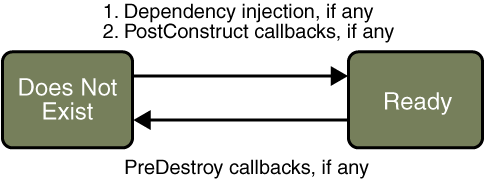

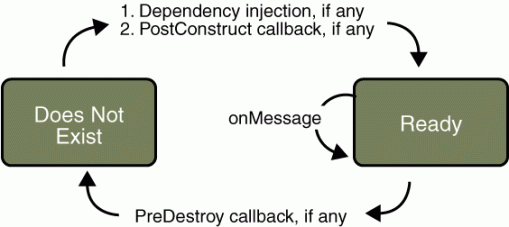
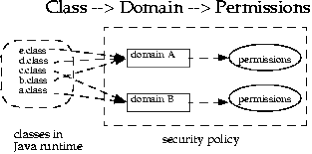
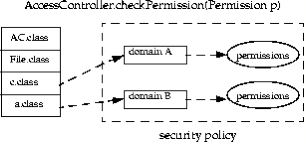
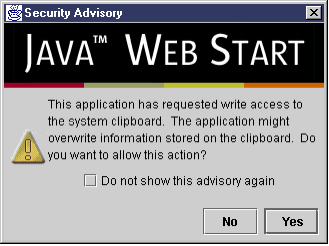

You must be logged in to post a comment.